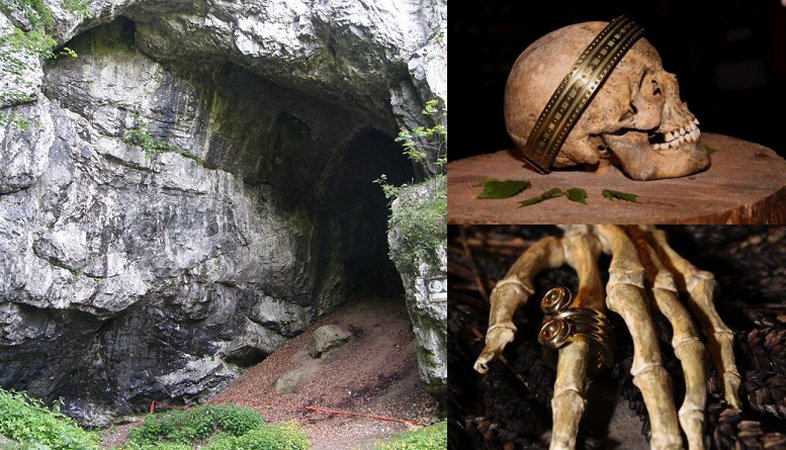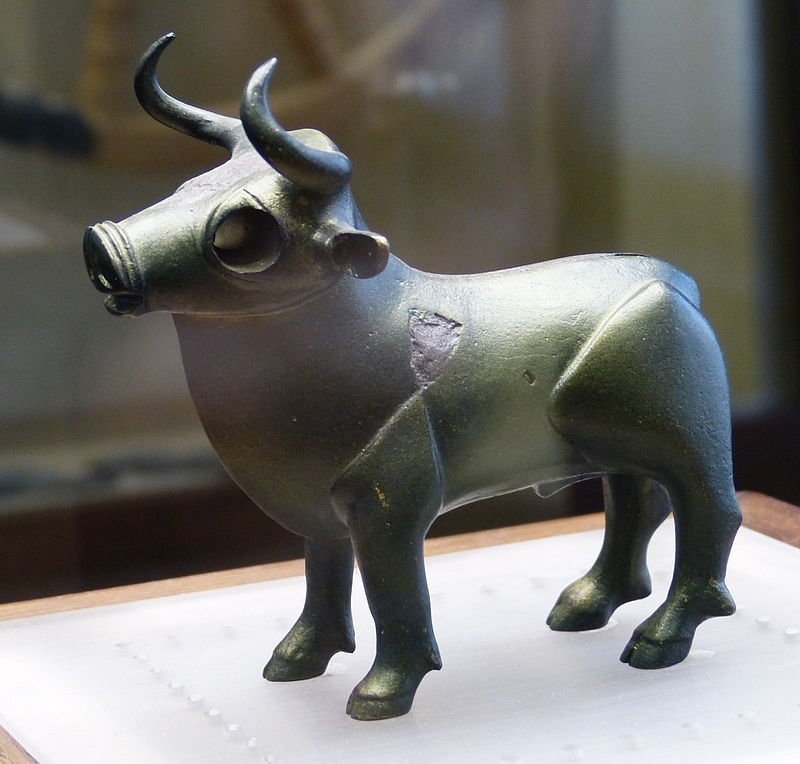Puzzle Of The Bull Rock Cave – Ancient Mass Grave Remains Unexplained
Ellen Lloyd - AncientPages.com - The Bull Rock Cave in Moravia, Czech Republic, is one of Europe's most amazing archaeological sites. The cave has long been known to the locals, but this ancient site was never properly examined.
Recent investigations reveal this mysterious place has a dark history. It was a site where gruesome events occurred, and archaeologists are still uncertain why certain remarkable artifacts and skeletons were hidden in the Bull Rock Cave.
Many traces lead to the Celts, who played a very important role in the history of ancient Europe. However, many of the unearthed artifacts also reveal the presence of people from different parts of the world. The discovery of an ancient mass grave at the site still remains unexplained.
Left: Entrance to the Bull Rock Cave, Credit: Wikipedia - Right-top: 2,600-year-old skull found in the cave, Credit: Prague Post - Right-bottom: Finger-ring, Credit: Prague Post
The Bull Rock Cave (Býcí skála Cave) has been home to many people during different epochs. Modern archaeologists have established that the Bull Rock Cave was occupied during the Palaeolithic, Eneolithic, Hallstatt, La Têne, and Medieval periods, but only for short periods.
Between 1867-1873, archaeologist Jindřich Wankel examined the cave and found evidence of a Palaeolithic settlement from around 100,000 - 10,000 B.C.
Famous Hallstatt culture bronze statue of a bull found in the Bull Rock cave. Credit: Wikipedia
In 1872, Wankel announced an incredible archaeological discovery. Two young boys had found a bronze Celtic bull statue dated to ca. 560 B.C. Wankel and his scientists also found animal and material offerings, crops, textiles, ceramic and sheet-metal vessels, jewelry, glass, and amber beads inside the Bull Rock Cave.
Gruesome Discovery Inside The Bull Rock Cave
The next discovery was less pleasant. Wankel said skeletons of one man and forty young women were unearthed inside the cave. Some women were beheaded, and some were missing legs or hands. One of the skulls had been placed in a bucket. On a small stone altar adorned with stalks of grain lay two arms with bracelets and gold rings, next to which was a skull that was spliced in half.
On a small altar, severed hands were placed. Credit: Balkan Celts
Deeper inside the cave, archaeologists found remains of a chariot with bronze fittings and the skeleton of a man. At the cave entrance was a Celtic Iron Age metal workshop and tools.
Who were these people, and why had they died inside the Bull Rock Cave? Wankel thought that he had discovered a Celtic chieftain’s burial. He assumed that all the artifacts had been offerings and the horse and young women had been sacrificed.
Will Scientists Finally Unravel The Secrets Of The Bull Rock Cave?
Later investigations revealed Wankel’s theory was not entirely correct. Researchers determined that not all of the skeletons belonged to women. Most of the victims were male and women between 30-60 years old. The remains of children were also identified. It was also unclear whether the victims had been sacrificed or murdered. Many of the artifacts discovered at the site come from all over Europe. Researchers found amber from the Baltic, bronze belts typical of northern Italy, and iron weapons from the Caucasus. This is a problem because archaeologists do not know the people's identities in the cave.
There are many theories attempting to explain what happened at the site. Some suggest the Bull Rock Cave was home to an ancient cult and a place of sacrifice. Others have put forward theories promoting ancestral warfare, the extermination of a cult site, or the assassination and slaughter of merchants. All of these theories remain speculative until new evidence is found.
Currently, the Bull Rock Cave still remains an unsolved ancient European mystery.
It should also not be forgotten that the cave contains a Neolithic picture. It is the oldest cave painting known in the Czech Republic. It depicts a geometrical shape resembling a grill with a size of 30x40 cm, painted in charcoal on the cave wall.
During World War II, the Nazis built an underground factory in the cave, damaging the entrance area. After the war, a few more caves were discovered. Further excavations of the cave can shed more light on the history of this place.
Exploring the mysterious cave on your own is not allowed. Except for the entrance, the cave is not accessible to the public, although occasionally, it is open to visitors. Several of the artifacts discovered in the Bull Rock Cave are stored in the Natural History in Vienna, Austria.
There are many interesting caves in Europe. Another place of great interest is the Ciemna Cave which we discussed earlier on Ancient Pages. The Ciemna Cave in Poland was inhabited by humans as far back as 120,000 years ago.
Updated on January 4, 2023
Written by - Ellen Lloyd AncientPages.com
Copyright © AncientPages.com All rights reserved. This material may not be published, broadcast, rewritten or redistributed in whole or part without the express written permission of AncientPages.com
Expand for referencesMore From Ancient Pages
-
 Beautiful Temple Dedicated To Ninhursag, Goddess Of Childbirth And Divine Protector Of Wild Animals
Civilizations | Jan 3, 2017
Beautiful Temple Dedicated To Ninhursag, Goddess Of Childbirth And Divine Protector Of Wild Animals
Civilizations | Jan 3, 2017 -
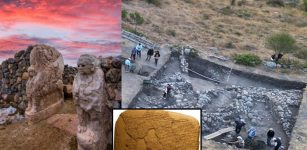 Cuneiform Tablet With New Indo-European Language Discovered In The Capital Of The Hittites
Archaeology | Sep 21, 2023
Cuneiform Tablet With New Indo-European Language Discovered In The Capital Of The Hittites
Archaeology | Sep 21, 2023 -
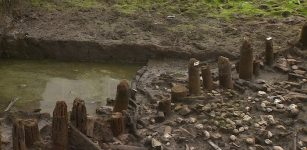 The Pompeii Of The Fens: Ancient Village In Cambridgeshire Burned Down 3,000 Years Ago For Unknown Reasons
Archaeology | Jul 14, 2016
The Pompeii Of The Fens: Ancient Village In Cambridgeshire Burned Down 3,000 Years Ago For Unknown Reasons
Archaeology | Jul 14, 2016 -
 Castor And Pollux: Dioscuri Brothers Immortalized In The Night Sky In Greek Beliefs
Featured Stories | Jan 24, 2024
Castor And Pollux: Dioscuri Brothers Immortalized In The Night Sky In Greek Beliefs
Featured Stories | Jan 24, 2024 -
 Sumerian King List – Ancient Record Of Kingship That Has Long Been Of Great Interest
Artifacts | Jan 22, 2016
Sumerian King List – Ancient Record Of Kingship That Has Long Been Of Great Interest
Artifacts | Jan 22, 2016 -
 Evidence Of Unknown Ice Age Civilization Discovered In Michigan Ignored By Pipeline Company!
Archaeology | Oct 16, 2020
Evidence Of Unknown Ice Age Civilization Discovered In Michigan Ignored By Pipeline Company!
Archaeology | Oct 16, 2020 -
 Samurai Swords: Katana And Wakizashi And Their Long Tradition
Ancient Traditions And Customs | Aug 6, 2018
Samurai Swords: Katana And Wakizashi And Their Long Tradition
Ancient Traditions And Customs | Aug 6, 2018 -
 Secret Ancient Knowledge Of Venus – Ancient Gods, Giants And More Controversial Theories – Part 2
Ancient Mysteries | Jul 2, 2018
Secret Ancient Knowledge Of Venus – Ancient Gods, Giants And More Controversial Theories – Part 2
Ancient Mysteries | Jul 2, 2018 -
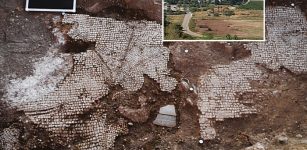 Ancient Colorful Nile-Scene Mosaics, Plastered Walls, Water Cistern Unearthed On The Shore Of The Sea Of Galilee
Archaeology | Sep 27, 2022
Ancient Colorful Nile-Scene Mosaics, Plastered Walls, Water Cistern Unearthed On The Shore Of The Sea Of Galilee
Archaeology | Sep 27, 2022 -
 Hidden 15th-Century Text On Medieval Manuscripts – Discovered By Students
News | Nov 23, 2020
Hidden 15th-Century Text On Medieval Manuscripts – Discovered By Students
News | Nov 23, 2020 -
 Medieval Burials Discovered Under London’s Westminster Abbey
News | Sep 24, 2015
Medieval Burials Discovered Under London’s Westminster Abbey
News | Sep 24, 2015 -
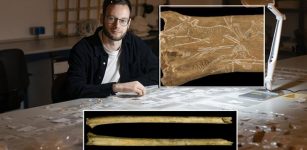 Fascinating Portable Art From Torre Cave, Gipuzkoa – One Of The Most Complete Specimens From The Entire Iberian Peninsula
Archaeology | May 26, 2023
Fascinating Portable Art From Torre Cave, Gipuzkoa – One Of The Most Complete Specimens From The Entire Iberian Peninsula
Archaeology | May 26, 2023 -
 Swedenborg: Man Of Unaccountable Talents, Scholar, Great Intellect And His ‘Spiritual Awakening’
Featured Stories | Jun 28, 2018
Swedenborg: Man Of Unaccountable Talents, Scholar, Great Intellect And His ‘Spiritual Awakening’
Featured Stories | Jun 28, 2018 -
 On This Day In History: Captain James Cook Spotted The East Coast Of Australia – On Apr 19, 1770
News | Apr 19, 2016
On This Day In History: Captain James Cook Spotted The East Coast Of Australia – On Apr 19, 1770
News | Apr 19, 2016 -
 Mysterious El Caracol At Chichen Itza: What Did Maya Astronomer-Priests Observe In The Sky?
Archaeoastronomy | May 24, 2019
Mysterious El Caracol At Chichen Itza: What Did Maya Astronomer-Priests Observe In The Sky?
Archaeoastronomy | May 24, 2019 -
 Ancient DNA Reveals Irish Are Not Celts – Irish Ancestors Came From Biblical Lands – Scientists Say
Archaeology | Mar 30, 2020
Ancient DNA Reveals Irish Are Not Celts – Irish Ancestors Came From Biblical Lands – Scientists Say
Archaeology | Mar 30, 2020 -
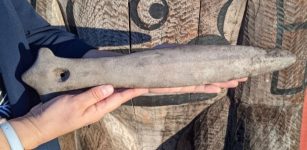 Unique Ancient Coast Salish War Club Accidently Discovered In British Columbia Backyard
Archaeology | Mar 22, 2022
Unique Ancient Coast Salish War Club Accidently Discovered In British Columbia Backyard
Archaeology | Mar 22, 2022 -
 Alexander Nevsky: Grand Prince Of Novgorod, Skilled Fighter, Quick–Thinking Strategist Who Defeated Swedish And German Invaders
Featured Stories | Feb 22, 2019
Alexander Nevsky: Grand Prince Of Novgorod, Skilled Fighter, Quick–Thinking Strategist Who Defeated Swedish And German Invaders
Featured Stories | Feb 22, 2019 -
 Mediterranean Migration Was Low Over 8,000 Years – New Study
Archaeology | Mar 3, 2021
Mediterranean Migration Was Low Over 8,000 Years – New Study
Archaeology | Mar 3, 2021 -
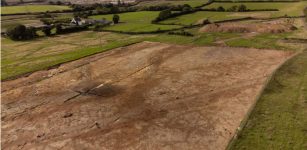 Intriguing Ancient Roman Road Discovered Under The New Town In Devon
Archaeology | Feb 7, 2023
Intriguing Ancient Roman Road Discovered Under The New Town In Devon
Archaeology | Feb 7, 2023

